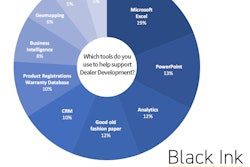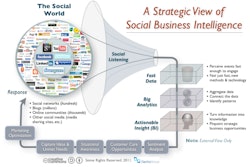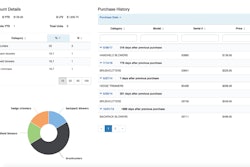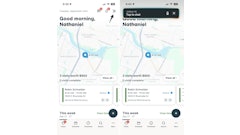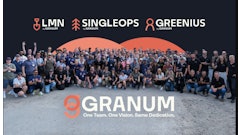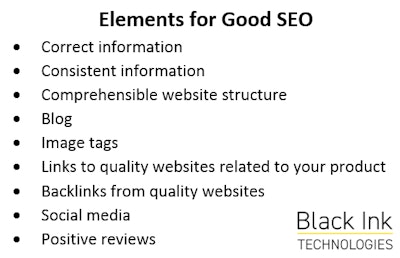
Since the work they do mostly involves the outdoors, it is not too surprising that some outdoor power equipment (OPE) dealers are, unfortunately, less than savvy when it comes to streamlining their digital presence to achieve optimal results. Search engine optimization (SEO) and web analytics may seem like complicated issues, and to some extent they are, but pretty soon you can be ready to use both to boost your profits.
This article is for OPE dealer managers, as well as other important staff members, who want to make sure that potential new customers have no problem finding information about their organization online. The article is also going to explain how you can use web analytics to make powerful insights that can help your business grow.
Obviously not as much as the amount that goes into landscaping, but a not unnoticeable amount of physical labor goes into SEO, a term that refers to implementing changes to your organization’s digital presence in such a way that your organization’s chances for being ranked prominently—when a person enters a specific query—get maximized.
1. Make Sure Information Is Correct
It is crucial to make sure that all of the information about the organization contained on your website is correct since search engine algorithms use that information (along with other things) to determine your rank, which means that a considerable amount of typing, clicking a mouse and staring at a computer screen needs to get done.
Spellcheck can—and will—save you most of the time, but search engines prize consistency over everything else and having a key piece of information that was entered wrong, in a way that spellcheck can’t possibly catch, on your organization’s website even once hurts its chance of claiming the number one rank. Customers don’t care whether you sometimes add “Equip” to the end of your name or sometimes “Equipment,” but for the sake of minimizing index discrepancies, search engines very much prefer that you make a choice and stick with it.
2. Add Keywords
The second thing you should do that is good for SEO is add lots of keywords to your organization’s website in combination with language that connects the keywords to your organization. Do not take this to mean you should copy and paste “leaf blowers,” “string trimmers” and “lawn mowers” several hundred times. That strategy backfires, as when search engine algorithms recognize pages doing that and automatically dock their rank.
Instead keywords must reside in sentences that express their semantic connection to your brand. For instance, “Jeff’s Outdoor Power Equipment sells outdoor power equipment” would signal to a search engine that Jeff’s OPE should show up when a user types in “outdoor power equipment.”
You should also semantically connect your organization to the products that it sells on the Internet in places other than your organization’s website. Doing so gives search engines a larger and more diverse pool of information to work with, which increases the likelihood that their algorithm ranks you highly. If you don’t have social media accounts tied to the dealership as of yet, you should create some and start posting content related to OPE.
Because where your company is Organization X and one of the products you sell is Product Y, the more webpages that a search engine can find saying Organization X sells Product Y, the better. A greater volume and variety of places on the Internet accurately describing the dealer makes search engines more likely to rank you highly, and social media is a free tool that you can use to increase that. Plus, social media has the added benefit of providing a new channel through which customers can find out about you.
3. Start a Blog
One step further would be to start writing a blog. Search engines want to make their users happy by ranking the webpages that have the most relevant and valuable content (as it relates to their queries) the highest. Hosting a blog that is dedicated to discussing OPE-related topics on your website would give you the opportunity to build a content library, which would provide search engines with more concrete examples of the purpose and scope of your website.
Blog posts don’t have to be Shakespearean in terms of the quality of writing, but they do have to be original. Search engines have the same policy on plagiarism as school teachers do—they significantly lower your grade if they catch you stealing other people’s words.
4. Pay Attention to Links
Starting a blog would also give you the opportunity to add to the amount of links to other websites that your website has. When you are writing a blog, include hyperlinks to webpages that have useful OPE-related information. Hosting links to other webpages that have to do with the product that you sell helps your webpages be seen by search engines as being potentially useful for users making certain queries. It goes without saying, don’t link to your competitors’ websites.
Links to your organization’s website on websites other than your organization’s website are called backlinks. These are valuable to have in terms of SEO because they are indicators that people trust your website to be hosting good content. Otherwise, they wouldn’t link to it. If someone ever asks to write an article about your organization, make sure to request a link to your website in the article.
5. Accumulate Positive Reviews
Reviews for your store affect whether you outrank your competition in search engine results. This is especially true at a local level. When people search for “OPE dealer Nashville Tennessee,” for example, depending on the search engine they use, it generally offers a list of OPE dealers in and around Nashville, along with a map showing where they all are. The order of that list is determined, in part, by the reviews that people have written for the establishments.
6. Have a Structure in Place
Beyond having correct information, social media, links, backlinks and positive reviews, it is important for your organization’s website to have a hierarchical structure that search engines find easy to navigate. Search engines utilize web crawlers, or programs that automatically search the web, to determine what the results are going to be when a user makes any particular query. Web crawlers look for indicators such as page titles, subtitles, strings of characters in the URL and metadata while they are seeking certain pieces of information, similar to how customers look for signs above aisles when they search for items in your store. You should make the structure for your website easy to follow—for both humans and machines.
Metadata is data about data and it is another thing that search engine algorithms factor in when they determine your rank. With HTML code, the programming language that is used to display most of the webpages that are on the Internet, content producers can include tags (keywords) that describe the individual images you are putting on your website. Since it is hard for a computer to look at something and tell if it’s a lawn mower, it helps, in SEO terms, to include tags for the images on your website in the code for your webpages. When you are adding tags for images, you should add your organization’s name as one to make a connection between it and the product you sell.
7. Diversify
Refrain from putting all your eggs in one basket. In other words, do not position your digital presence to make it so that your website is likely to rank very highly for one query—instead make it so that it is likely to rank somewhat highly for many searches. These can be queries such as the product you sell, accessories for the product you sell and servicing for the product you sell, just to name a few.
8. Take Advantage of Web Analytics
Web analytics is a school of data science that focuses on statistical inferences that can be made by looking at web traffic data. Certain services offer tracking solutions that, once tied into your website, can give you details about the people who visit it. Insights that can be made through web analytics can help your organization better its SEO and sell more product.
For example, it can tell you where on the Internet visitors come to your website from. Having this information lets you know what is working in terms of getting people to come to your website. Web analytics can also tell you whether people are viewing your website on a desktop or a mobile device, which lets you know which type of device you should optimize your website’s content for.
You can use web analytics to run A/B tests. An example of an A/B test is when you have your top banner display an image of your showroom for an A group of visitors, whereas for a B group of visitors, you have your top banner display a mission statement. Then you can compare which group of visitors stayed on your site the longest. Another way web analytics can be used to conduct A/B tests to strengthen your marketing efforts is to combine it with email campaigns. Say you sent out a thousand emails with “low prices” in the subject line and a thousand emails with “quality service” in the subject line, and the two email templates contained a different link for your website. Then you can compare the effectiveness of the two email campaigns by comparing how many people visited each link.
Web analytics tools are mostly automated, whereas SEO is an almost entirely manual. Search engines recognize and penalize webpages that have computer-generated text, so you have to write it personally, and it is safer to check that your information is all correct yourself rather than trust spellcheck to accomplish it. You must, however, discover useful web analytics insights and act on them for your investment in the technology to pay off.
You should treat your digital presence and your physical store more or less the same, meaning both should be easy for customers to find, peruse and interact with. Search engine algorithms are like shoppers: Shoppers want an establishment where everything is easy to find and search engines want the same exact thing from your website. Furthermore, shoppers are upset when price tags are wrong, just as misspelled information causes search engine algorithms to lower your rankings.
Treat search engines like you do customers. After all, they are shopping in a way, too. Their goal is to find websites that their users find useful and the price they pay is the uncertainty that their users indeed find them useful. Therefore, you should make it as easy as possible for them to find your website and make your website’s purpose as intuitive to read as possible. That way, they are more likely to buy it.




